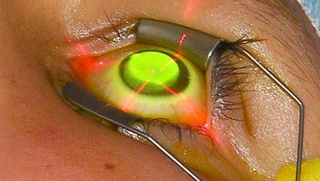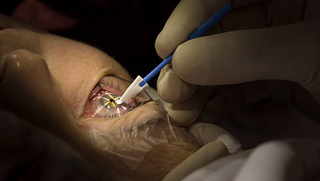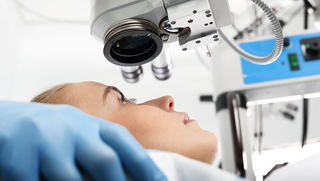The Cornea
What is the Cornea?
The cornea is the clear tissue that protects and covers the inner parts of the eye, like the pupil and iris similar to the clear surface of a watch. Its primary purpose is to help the eyes focus on an image. Once the light enters the eye, the cornea helps bend and position the light correctly on the retina. When a cornea is healthy, the shape is round, smooth, and with a slight curve while a diseased cornea might appear deformed or elongated. The shape of your cornea determines how well the light refracts into your eye, which affects your visual acuity. There are a variety of corneal infections or genetic conditions that can affect the structure and function of the cornea, causing vision issues and weakened eye health.
At Visionary Eye Surgeons, we strive to help our patients improve their quality of life by identifying and helping manage corneal problems. Our goal is to provide innovative treatment plans. For patients who require treatment, such as Phototherapeutic Keratectomy or corneal cross-linking, our expert, surgeons can help develop the best treatment plan for you.
Get in touch
The Cornea Form
Diseases and Disorders
At Visionary Eye Surgeons, our skilled, ophthalmologists have extensive knowledge when it comes to diagnosing a variety of complicated corneal diseases and disorders, spanning from common to rare. At our office we are proficient in the management of:
About Corneal Cross-Linking
Corneal cross-linking (CXL) is an advanced corneal procedure that helps decrease corneal thinning and steepening, which is caused by various corneal conditions including: keratoconus, pellucid marginal degeneration, and other types of corneal ectasia. By combining riboflavin and ultraviolet light, CXL helps strengthen and bond the collagen fibers located within the corneal tissue. CXL is an effective treatment for preventing the deterioration of corneal tissue; however, it cannot correct your vision, cure the disorder, or modify the structure and shape of the cornea.
At Visionary Eye Surgeons, our team of expert ophthalmologists has years of experience performing corneal cross-linking or CXL procedures. If you suffer from a corneal disease or condition that creates thinning in the cornea tissue, please contact our office. Our group can properly diagnose you and help you determine if CXL is right for you.
About Ectasia
Caused by various eye disorders, such as keratoconus and pellucid marginal degeneration, ectasia happens if the corneal tissue starts to weaken and thin. When these types of diseases start to progress, the cornea loses its shape and the inability to maintain its structure. This causes the cornea to become oblong and protrude. In some cases the underside of the cornea can break causing scarring of the cornea that may need a cornea transplant. Because the cornea plays such a big part in visual acuity, if it changes shape, it can start to affect your eyesight.
Best Candidates
CXL works best for patients who have been diagnosed with keratoconus, pellucid marginal degeneration, and other common eye problems that cause the cornea to thin. Also, CXL may help men and women who experience persistent glare or halo problems, eye inflammation, or sensitivity to light because of corneal disorders. During your CXL consultation, our skilled ophthalmologists will complete a comprehensive eye assessment and perform advanced diagnostic exams to decide if CXL works best for your eye condition.
Treatment Options
CXL is a minimally invasive, outpatient procedure. Before your treatment, our expert eye surgeons will utilize state-of-the-art technology to determine which parts of your cornea have started to deteriorate, and they will also assess the severity of your condition. If needed, we can combine CXL with other treatments that help strengthen the corneal tissue. As we design your treatment plan, we discuss all of the options that work best for your condition and provide you with the proper post-care instructions.
To perform the CXL treatment, we will ask you to rest comfortably in a treatment chair. During your procedure, we operate on one eye at a time, and as your eye is treated, a small device will hold your eye open. This device does not cause any pain. Generally, most patients will need the epithelium coating gently removed so we can easily access the corneal tissue. This step allows the riboflavin eye drops to deeply penetrate the cornea. Next, a specialized ultraviolet light is shined into the eye as we gently administer the riboflavin eye drops.
What to Expect
If we removed your epithelium layer, you will have to wear specialized contact lenses that act as bandages for about a week after your treatment. Our doctors will take the time to thoroughly discuss your post-care instructions and answer any questions you may have. It’s extremely important that you carefully follow the directions to ensure proper healing. Before your surgery, we will schedule a series of follow-up appointments to check your healing and progress. If you notice any side effects, such as swelling, pain, or an infection, please contact our office as soon as possible.
Get Connected To Us
Corneal cross-linking is a new innovative treatment that can help slow corneal thinning and may reduce the need for a corneal transplant. If you suffer from ectasia or keratoconus, or another eye disorder that leads to corneal thinning, please reach out to office to receive additional information.


